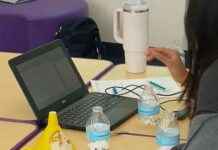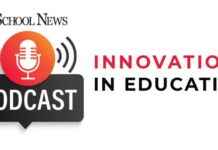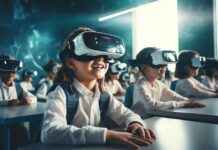Technology has become an essential component in today’s classrooms, revolutionizing the way teaching and learning take place. The integration of digital tools like interactive whiteboards, learning management systems, and educational apps has transformed traditional teaching methods, making lessons more engaging and interactive. This shift towards technology in education enables personalized learning by adapting content to meet the diverse needs of students, allowing for tailored instruction that addresses individual strengths and weaknesses.
Moreover, technology provides access to a wealth of resources and information, expanding the learning environment beyond the confines of the classroom. Tools like virtual reality and augmented reality offer immersive experiences that deepen understanding and make abstract concepts more tangible. Collaborative platforms and communication tools enable real-time interaction and teamwork, supporting both in-person and remote learning.
The integration of technology in the classroom streamlines administrative tasks, fosters engagement, and provides innovative methods for delivering content. This dynamic approach not only improves learning outcomes but also prepares students for a technologically advanced world.
One of the primary ways technology enhances teaching is through interactive learning tools. Interactive whiteboards, educational apps, and multimedia resources make lessons more engaging by incorporating visuals, videos, and interactive elements. This multi-sensory approach helps capture students’ attention and makes complex concepts more accessible.
Technology also supports personalized learning through adaptive learning platforms like DreamBox and Khan Academy, which analyze student performance and adjust tasks in real time to offer customized support. Collaboration and communication tools enable students to work together more effectively, fostering a collaborative learning environment. Additionally, technology provides access to diverse resources and global perspectives, offering students exposure to a wide range of information and experiences beyond the traditional curriculum.
The benefits of using technology in the classroom are manifold, transforming the educational experience for both teachers and students. Enhanced engagement, personalized learning, access to diverse resources, improved collaboration, and increased administrative efficiency are just some of the positive effects of integrating technology into education. With technology, students can benefit from increased engagement, personalized learning, and improved collaboration, ultimately enhancing the educational experience and better preparing them for the future.
In conclusion, technology plays a crucial role in enhancing students’ learning experiences by making education more engaging, personalized, and accessible. By integrating technology into education, students are better prepared for academic success and the demands of the modern world. Teachers also benefit from technology by increasing efficiency, improving assessment capabilities, and gaining access to a wealth of teaching resources. Overall, the positive effects of technology in education are vast, making it a powerful asset in modern classrooms.







